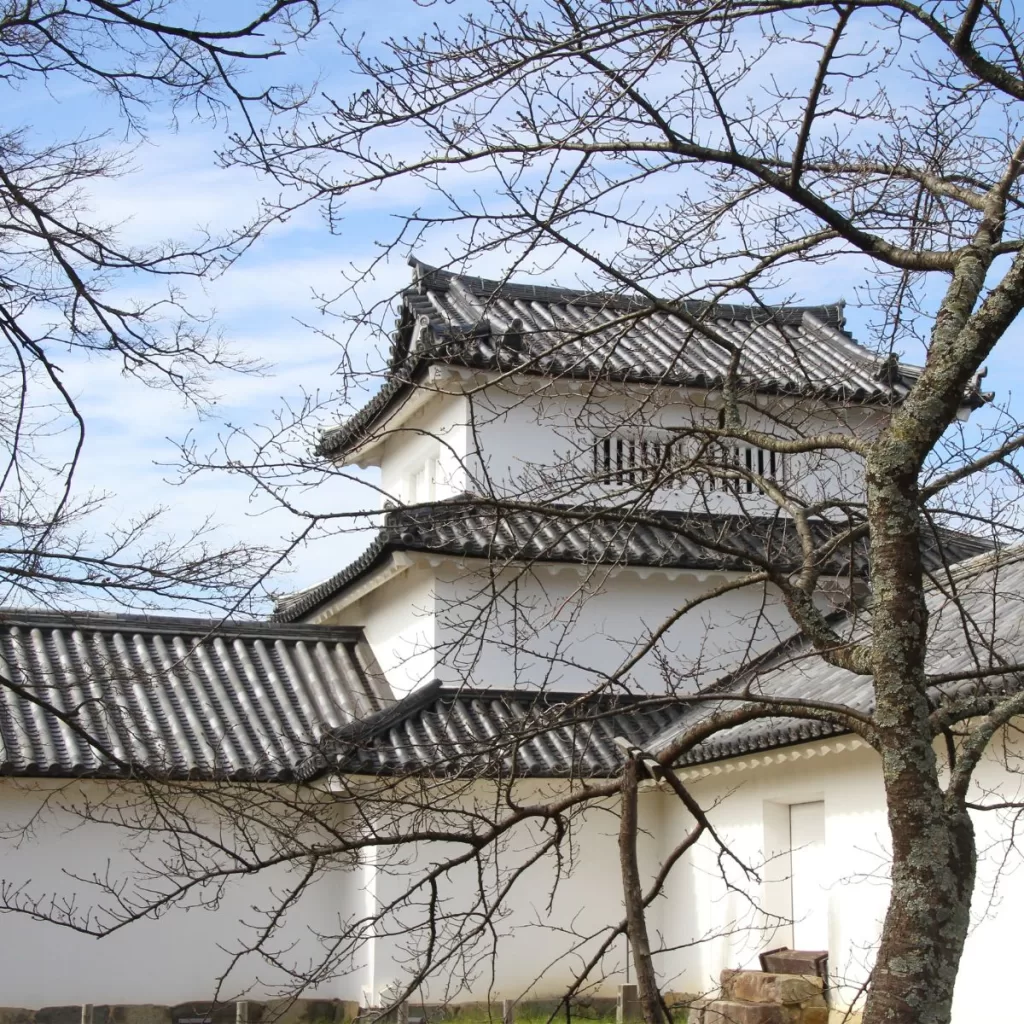Hikone Castle: A Japanese Feudal Era Treasure
Hikone Castle is considered one of the most beautiful and historically significant castles in Japan. Perched on the shores of Lake Biwa in Shiga Prefecture, this magnificent 400-year-old castle has been designated a National Treasure and Historic Site for its well-preserved structures and deep cultural heritage.

History of Hikone Castle
Hikone Castle was constructed in the early 17th century by daimyo Ii Naomasa, one of the most trusted generals under Tokugawa Ieyasu. After Naomasa helped Ieyasu win the pivotal Battle of Sekigahara in 1600, he was granted control of the Hikone Domain on the eastern shores of Lake Biwa.
Strategically, Hikone was a vital chokepoint on the important Nakasendo highway connecting Kyoto with eastern Japan. The area was previously home to Sawayama Castle, but Naomasa decided to construct a new fortress on the lakeshore using the latest contemporary castle design techniques.
After a rapid construction period of only two years, Hikone Castle was completed in 1622 as the seat of the Ii clan daimyo. The Ii ruled Hikone for over 260 years until the end of the feudal era in 1868, with no damage or major modifications made to the castle during this stable period.
Design of the Castle
Hikone Castle utilizes a unique hilltop design, taking advantage of a 100-meter-high natural hill called Mt. Konki. The inner complex sits atop the summit, surrounded by two concentric moats at the base. The main keep stands three stories high at the center.
Many elements of Hikone Castle were “recycled” from other nearby castles to save time and money. The tenshu or main keep was relocated from Otsu Castle, while many turrets, gates, and stones were brought from Sawayama Castle and other medieval mountain castles. This frugal approach allowed rapid construction without compromising defensive design.
Despite its hodge-podge origins, Hikone Castle harmoniously blends medieval defensive structures with early modern architecture. This blend of styles across eras is part of what makes Hikone Castle architecturally unique.
Key Structures of Hikone Castle
The Main Keep – Standing proudly at the summit of Mt. Konki, the main keep is relatively small but displays a combined style of architecture from different eras. It remains one of only five castles in Japan with an original main keep designated as a National Treasure.
Tenbin Yagura – This magnificent gate features twin two-story yagura or turrets on each side, brought here from Nagahama Castle. The turrets protected the inner moats and baileys.
Taikomon Gate – The former main entrance to the innermost Honmaru section of the castle. Its steep, winding path helped deter invading forces.
The Moats – Almost perfectly preserved, the double moats protected the inner complex. Bridges cross over them to the inner enclosures.
Genkyuen Garden – This scenic garden at the castle’s base just outside the moats provides beautiful lake views.
Preservation of Hikone Castle
Remarkably, Hikone Castle remains almost entirely in its original completed form from 1622. Most of the walls, moats, turrets, gates, guardhouses, and other structures are still completely intact.
In 1951, the castle became one of Japan’s first designated National Historic Sites. In 1956 it became only the fourth Japanese castle honored as a Special Historic Site and National Treasure, along with Himeji Castle, Matsumoto Castle, and Inuyama Castle.
This prestigious designation requires maintaining the highest level of preservation to protect Hikone Castle’s cultural and architectural integrity. Ongoing restoration and reconstruction efforts have further enhanced the longevity of this special heritage site.
Visiting Hikone Castle Today
Today, visitors can explore almost the entire grounds of Hikone Castle. Walking tours allow you to circle the moats, climb the winding entrance paths, inspect the turrets and gates, and climb to the top of the main keep for panoramic lake views.
The Hikone Castle Museum at the base features rebuilt sections of the former palace, including rooms and gardens, giving a glimpse into the lifestyle of feudal lords. The museum also displays treasured artifacts, swords and armor owned by generations of Ii clan daimyo.
Surrounded by gorgeous cherry blossoms in spring and spectacular maple leaves in autumn, Hikone Castle remains an architectural wonder and a profound historical treasure for Japan. Exploring its beautifully preserved grounds and structures is like taking a journey back in time to the feudal era. For anyone interested in Japanese castles, samurai culture, or architecture, visiting Hikone Castle should be considered an absolute must.
After admiring the classic beauty and tranquil gardens of Hikone Castle, also visit the mighty Gifu Castle, which stands majestically atop Mount Kinka overlooking the city of Gifu. Gifu Castle has a fascinating history and its mountaintop setting provides breathtaking views of the surrounding area.
FAQ
1. What is Hikone Castle?
Hikone Castle is one of the finest examples of a Japanese feudal-era castle. It is located in Hikone, a castle town in Shiga Prefecture, Japan.
2. When was Hikone Castle built?
Hikone Castle was built during the Edo period, specifically in the year 1622. It was originally constructed by the II family, a powerful clan closely associated with the Tokugawa Shogunate.
3. Can you tell me more about the II family?
The II family, also known as the Ii clan, was a prominent samurai clan during the Edo period. They were loyal vassals of the Tokugawa Shogunate and held significant influence in the region.
4. Is Hikone Castle the original castle?
Yes, Hikone Castle is considered an original castle because it remains intact and mostly unchanged since its construction in 1622. It has withstood the test of time and is a precious heritage of Japan’s feudal era.
5. How can I get to Hikone Castle?
To visit Hikone Castle, you can take a train to JR Hikone Station. From there, it’s a short walk to the castle grounds.
6. What are some notable features of Hikone Castle?
Hikone Castle has a grand castle keep, a main gate, an outer moat, and beautifully preserved architecture. It offers a breathtaking view of Lake Biwa and is surrounded by cherry trees.